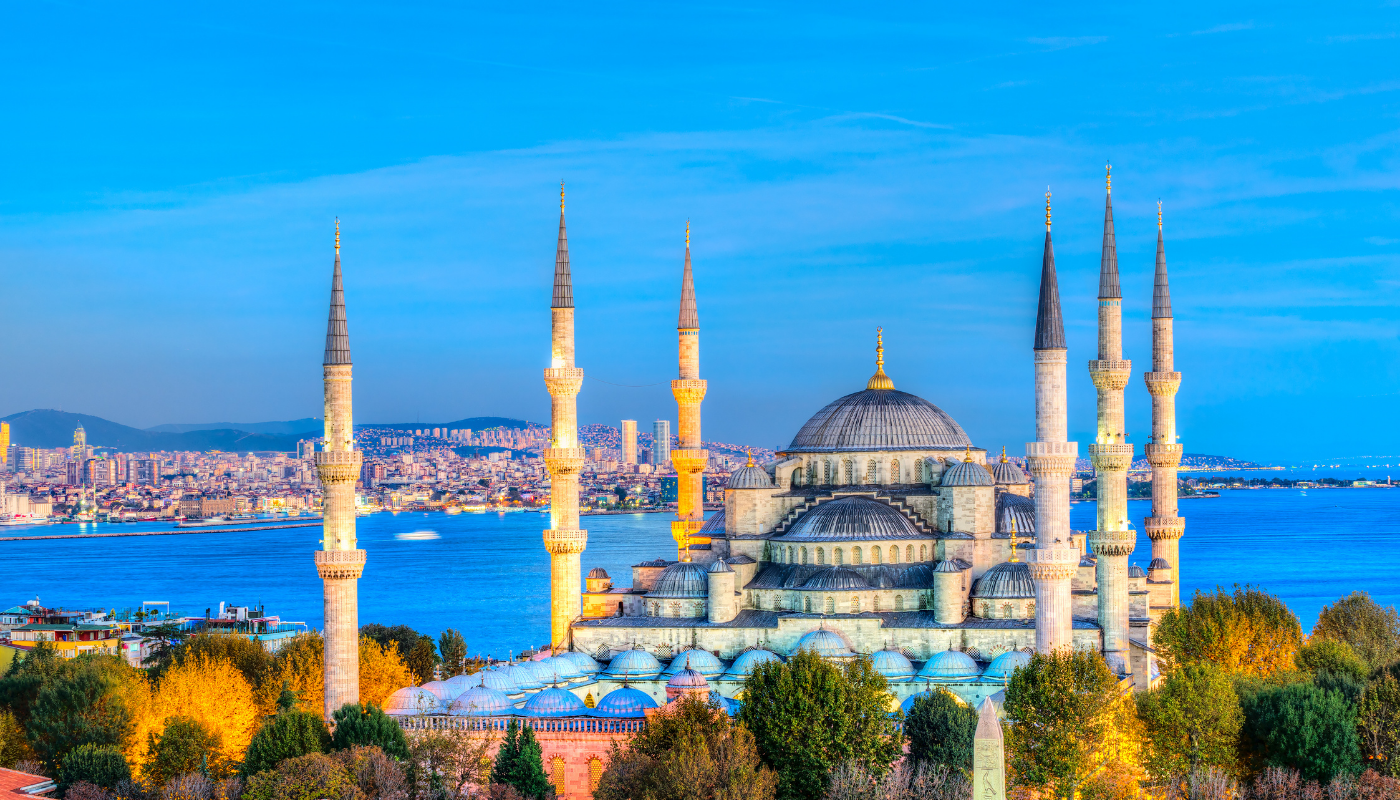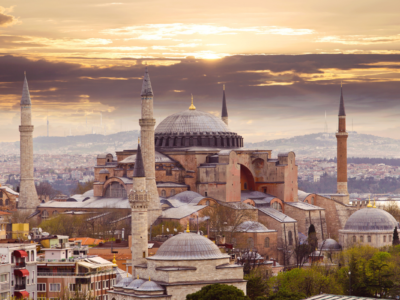Byzantine and Ottoman Heritage Private Tour
TOUR INFO AND ITINERARY
This is a full day walking city tour starting from your hotel. Your tour guide will pick you from your hotel any time you want and s/he will be at your service and guide you during the day for about 8 hours. At the start, your private licensed tour guide (in your mother tongue) will come and collect you from your hotel, preferably in the morning time, and drive/walk you to downtown Sultanahmet. The guide will tell you all the history and importance of the monuments in detail. Having a private tour guide comes in handy. For example, you will realize in situ that in front of every major museum, there are long queues. But, there is no need to panic; when you are under the umbrella of your private tour guide, you do not have to wait in long queues. You will forge ahead hassle-free and the guide will get you in rapidly. That will save you a lot of time. Licensed guides and his/her people in the company are allowed to get to museums without waiting in long queues. Additionally, when you have your private guide, you do not have to wait for other people in the group as in regular tours that are oftentimes burdensome. During the tour, it is suggested that you shall visit Hagia Sophia, Blue Mosque, Hippodrome and Obelisks, Cistern Basilica, Süleymaniye Mosque, Topkapı Palace, Grand Bazaar, Spice Bazaar, and Dolmabahçe Palace. There will be a lunch break any time you want. You will also be given free time at Grand Bazaar for shopping. Your guide will help you with some bargaining games which are part of the shopping in Turkey. At the end of the tour, you will be transferred to your hotel.
Altogether, this will be a cultural tour of "Sultanahmet Old City" from where the Byzantine and Ottoman Empires were ruled. You will be mesmerized by the grandeur of those empires that left their traces in İstanbul. At the end of the tour, you will have a great collection of pictures and videos. Having your own private tour guide in your own language will make all the difference. Since it is a private tour, you set your own agenda, you can start from whichever monument you want! Below, you can find a short summary of the places you shall be visiting during the tour.
Hagia Sophia, once described as the greatest church in Christendom, is certainly a masterpiece with a synthesis of the Occident and the Orient. Built by Constantine the Great in 325 on the remains of a pagan temple. Rebuilt by Justinian and Theodora. In 1453, Mehmet the Conqueror added minarets to the huge, soaring dome and turned the former church into a mosque. The building controversially became a museum in 1935, but the interior retains its religious ramifications with the Christian mosaics and Muslim calligraphic disks adorning its walls and piers. For the time being, it serves as a mosque again.
Blue Mosque, also known as Sultan Ahmed Mosque, this breathtaking building is one of the most majestic Ottoman mosques in all of Turkey. The Blue Mosque was built between 1609 and 1616, by the architect Mehmet Ağa, instructed by Sultan Ahmed I. It was designed as an imperial show of strength to complement the imposing Hagia Sophia, which faces it across Sultanahmet Square. Unlike the Hagia Sophia, it is supported by four 'elephant foot' pillars, and the central dome is flanked by four semi-domes, making it nearly a square in shape. It is dubbed the Blue Mosque because of over 20,000 handmade ceramic Iznik tiles that decorate the interior, featuring many different tulips, rose, carnation, and lily designs, well lit by 260 windows. Aside from its staggering size and exquisite beauty, one of the most distinctive elements of this Istanbul mosque is that it has six minarets, as opposed to the usual two or four of most of the city’s mosques.
Hippodrome, a public park used in the days of the Byzantine Empire for ceremonies and sporting events (chariot races, athletics). Theodosius Obelisk, Serpentine Column, Column of Constantine and German Fountain of Wilhelm II are the monuments decorating Hippodrome.
Cistern Basilica, known locally as Yerebatan Sarayı (Sunken Palace) or Yerebatan Sarnıcı (Sunken Cistern) this underground water cistern was the major water reservoir of Constantinople. The water was transported from the Belgrade Forest by the immense Byzantine aqueducts (Valens Aqueducts). It was built during the reign of Emperor Constantine in the 4th Century but greatly enlarged by Justinian in 537 AD, and used as water storage for the Great Palace during Byzantine times and for the Topkapi Palace under the Ottomans.
Süleymaniye Mosque, the truly staggering size of the Süleymaniye Camii (Suleymaniye Mosque) is one of its most distinctive features – built by the legendary architect, Mimar Sinan, it is known as one of his masterpieces, and his largest design. It is not just the awe-inspiring size that is impressive (the central dome stands 47m high), but also the elegantly decorated interior. The sense of space and light is emphasized in the supporting semi-domes to the northwest and southeast and the monumental arched spaces to the southwest and northeast.
Grand Bazaar, is the oldest and biggest closed bazaar in the world. It was founded in 1461. Like an enormous labyrinth, it is a spectacular and unique part of Istanbul with 17 doors, 60 streets, and over 3000 stores. The Grand Bazaar offers a wide range of products from copper to glazed tiles, from marriage articles to ready wear, and from various handicrafts to all types of spice. Western writers often mention the Grand Bazaar in their memories and travel journals and it is seen in some movies like James Bond.
Topkapı Palace, which had been the seat of government for the Ottoman Empire that ruled three continents for centuries, was constructed between the years of 1460 and 1478 during the reign of Sultan Mehmed II (The Conqueror). It was home to the sultans and their families until the reign of Sultan Abdülmecit. Therefore, it has a very rich collection of porcelains, robes, weapons, shields, armors, miniatures, Islamic calligraphic manuscripts as well as Ottoman treasures and jewelry.
Spice Bazaar, No visit to Istanbul is complete without stopping by the atmospheric Spice Bazaar. While the Grand Bazaar may be the largest and most famous of Istanbul's covered bazaars, this spice market wins the prize for being the most colorful, fragrant, and often the most fun as visitors can taste the goods on offer. It must definitely be on your shopping places list.
Dolmabahçe Palace, if you take a Bosphorus tour, you will pass many lavish and intriguing buildings, but the most opulent of them all surely has to be the 600m long Dolmabahçe Sarayı (Dolmabahce Palace). It took 13 years to build and was completed in 1856 and served as the administrative center of the Ottoman Empire until 1922.
The palace was commissioned by Sultan Abdülmecid who decided that there should be a more European palace than Topkapı Palace and was designed by Armenian architect Karabet Balian and his son. It is an ostentatious blend of architectural styles including Baroque, Rococo, Neoclassical and modern Ottoman, dripping in luxury. It must be added that the father of modern Turkey, Mustafa Kemal Atatürk has lived and passed away in this palace.
Closed: Topkapi Palace is closed on Tuesdays. Dolmabahçe Palace is closed on Mondays and Thursdays. Therefore, you should make your own tour plan accordingly. Grand Bazaar is closed on Sundays, it will be replaced with local shops.
Restrictions: In a spin of 8 hours, it will be impossible to visit all the monuments listed above. Hence, you should specify about 5-6 places before the tour starts and make your plan with your guide accordingly.
What is Included: Professional tour guide in your own language.
Cost: 1 to 6 people totally 250€ and 7 to 14 people totally 350€.


